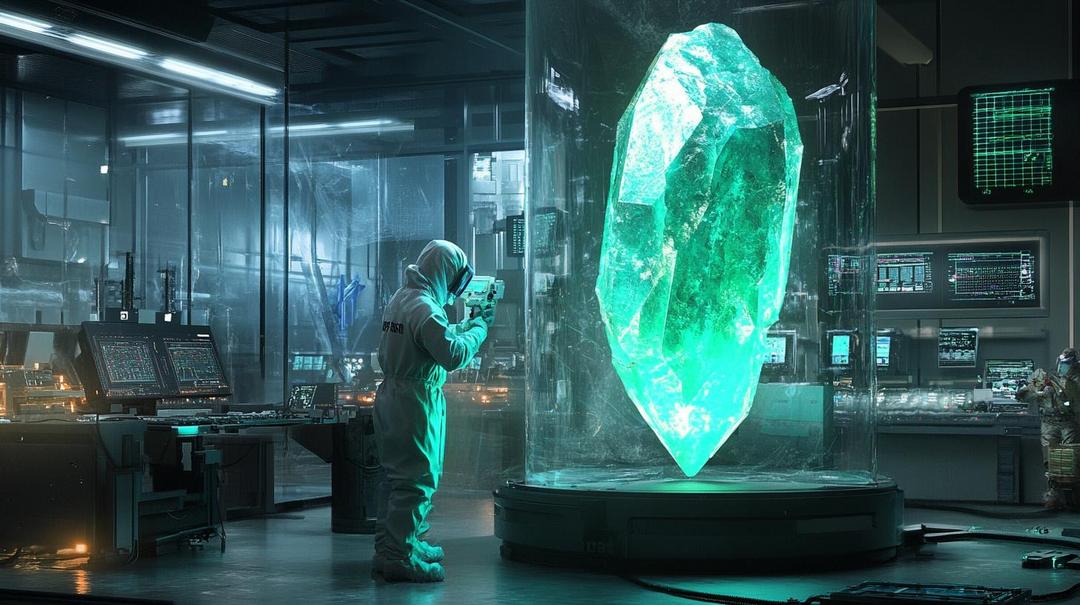Imagine a world without smartphones, lasers, or advanced optics. Rare earth crystal growth is a fascinating field bridging materials science, industry, and cutting-edge innovation. From crafting precision optics to advancing electronics, these crystals are found inside a lot of our modern tech. Learn how these remarkable materials are grown, their challenges, and why they matter so much to science and industry.
Let’s dive in.
What's Inside
What Is Rare Earth Crystal Growth?
Rare earth crystals represent a fascinating subset of materials with extraordinary properties that make them critical to numerous advanced technologies. At their core, these crystals are solid, structured arrangements of rare earth elements, which are a group of 17 metallic elements found in the periodic table’s lanthanide series.
Defining Rare Earth Crystals
Rare earth crystals are synthesized through precise crystal growth processes that transform raw materials into highly structured, pure crystalline forms. These crystals are not inherently “rare” in terms of abundance, but their extraction and refinement are complex and resource-intensive.
Key characteristics of rare earth crystals include:
- Unique optical properties
- Strong magnetic behaviors
- Exceptional electronic conductivity
- High thermal stability
Crystal Growth Fundamentals
Crystal growth involves transforming materials from liquid, gaseous, or solution states into organized solid crystal structures. For rare earth materials, this process requires:
- Extremely controlled environmental conditions
- High-precision temperature management
- Minimal contamination strategies
- Advanced technological interventions
Why Are Rare Earth Crystals So Important?
Rare earth crystals are technological game-changers, bridging critical gaps in multiple industries through their remarkable properties.
Technological Applications
Industries leveraging rare earth crystals include:
- Electronics: Semiconductor manufacturing
- Renewable Energy: Solar panel efficiency
- Telecommunications: Fiber optic systems
- Medical Technology: Advanced imaging equipment
- Aerospace: High-performance electronic components
Unique Material Properties
The significance of rare earth crystals stems from their extraordinary characteristics:
- Exceptional magnetic resonance
- High thermal conductivity
- Complex electron configuration
- Ability to emit specific wavelengths of light
- Strong superconducting potential
How Are Rare Earth Crystals Grown?
Crystal growth represents a sophisticated scientific process requiring precise control and advanced technological infrastructure.
Primary Crystal Growth Methods
Flux Growth
- Dissolving materials in a molten solvent
- Slowly cooling the solution to promote crystal formation
- Enables growth of complex crystal structures
Czochralski Process
- Melting raw materials at extremely high temperatures
- Pulling a seed crystal through the molten substance
- Producing large, uniform single crystals
Bridgman–Stockbarger Technique
- Directional solidification of materials
- Controlled temperature gradient methodology
- Ideal for creating high-purity crystals
Challenges in Growing Rare Earth Crystals
Crystal growth is not without significant obstacles:
Technical Limitations
- Maintaining ultra-high purity levels
- Managing complex thermal dynamics
- Mitigating structural defects
- Controlling contamination risks
Economic Considerations
- High energy consumption
- Expensive raw material sourcing
- Sophisticated equipment requirements
- Limited global production capabilities
Advances in Rare Earth Crystal Growth (2024 Update)
Technological Innovations
- Machine learning optimization algorithms
- AI-driven growth parameter modeling
- Enhanced computational simulation techniques
- Improved precision manufacturing systems
Emerging Growth Strategies
- Eco-friendly synthesis methods
- Nano-scale crystal engineering
- 3D printing integration
- Sustainable sourcing protocols
Applications of Rare Earth Crystals in Industry
Sector-Specific Uses
- Electronics: Advanced semiconductor design
- Energy: Efficient battery technologies
- Medical: High-resolution imaging systems
- Quantum Computing: Specialized material foundations
Future Directions: What’s Next for Rare Earth Crystal Growth?
The trajectory of rare earth crystal development points toward:
- Enhanced sustainable production methods
- Increased renewable energy applications
- Nano-scale and defect-free crystal engineering
- Expanded quantum technology potential
Conclusion
Rare earth crystal growth isn’t just a niche technical field — it’s a cornerstone of modern technology. From enabling 5G networks to powering green energy solutions, these crystals are integral to pushing science and industry forward. By understanding their growth processes, challenges, and innovations, we can appreciate their significance even more.
FAQs
What are rare earth crystals used for?
Rare earth crystals are used in lasers, fiber optics, semiconductors, electronic devices, renewable energy systems, and even medical imaging technologies like MRI.
What makes rare earth crystal growth challenging?
Challenges include maintaining purity, the rarity and cost of raw materials, high energy requirements, and controlling growth conditions to prevent defects.
How does the Czochralski process work?
The Czochralski process involves melting raw materials and pulling a crystal seed from the melt while controlling cooling rates to grow a singular large crystal.
Are rare earth elements sustainable to source?
Sustainability is a significant concern. While supply chains are improving, the extraction and refinement of rare earth elements remain energy-intensive and pose environmental challenges.
What industries depend on rare earth crystals the most?
Industries such as telecommunications, defense, renewable energy, electronics, medical imaging, and optical instrumentation rely heavily on rare earth crystals.


Dustin
Driven by a fascination with rare earth elements and their role in powering modern tech and engineering marvels. A true car and tech enthusiast, he loves exploring how these hidden heroes fuel our most exciting innovations.
You Might Also Like…